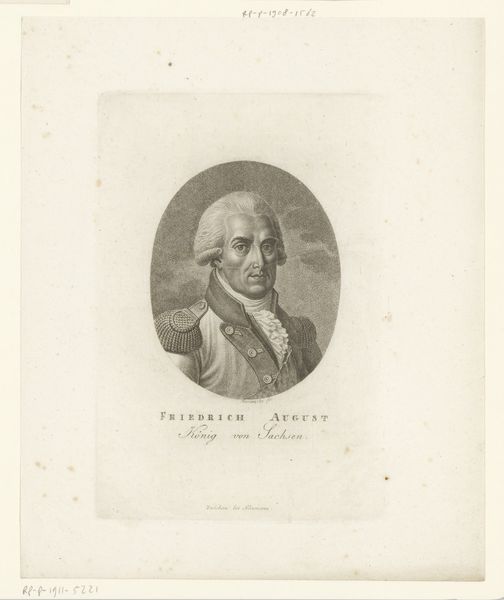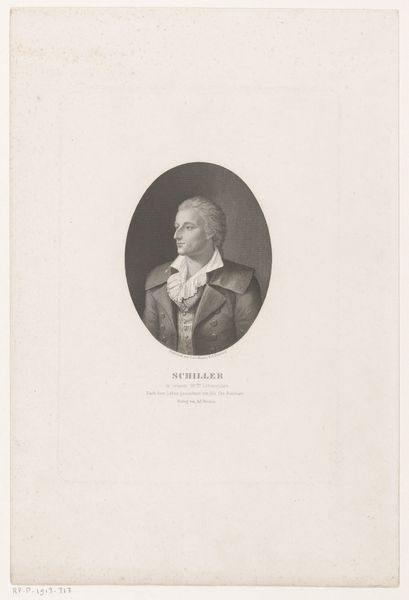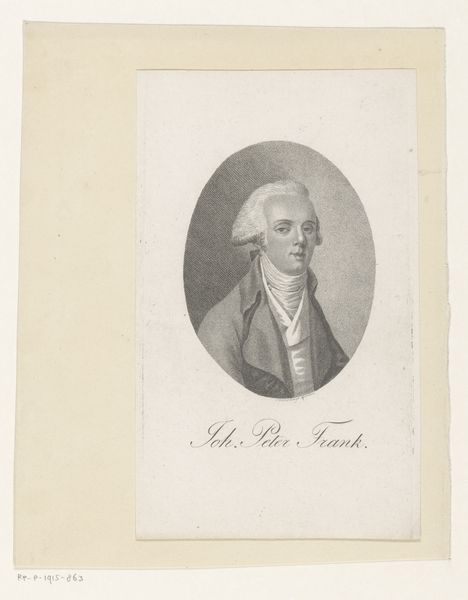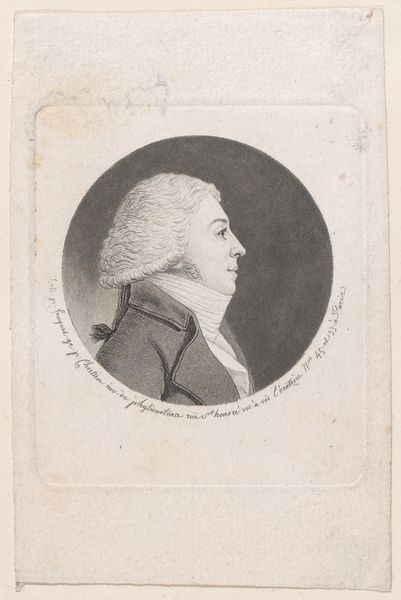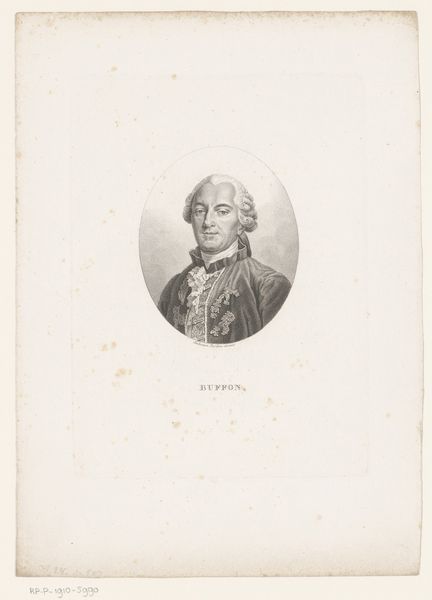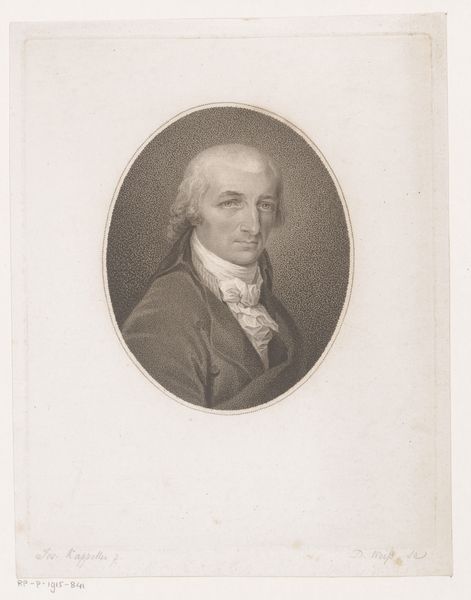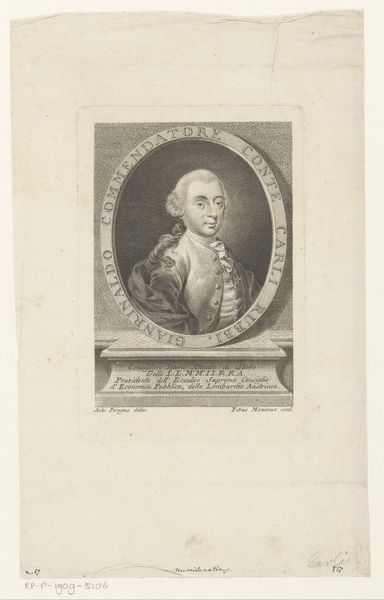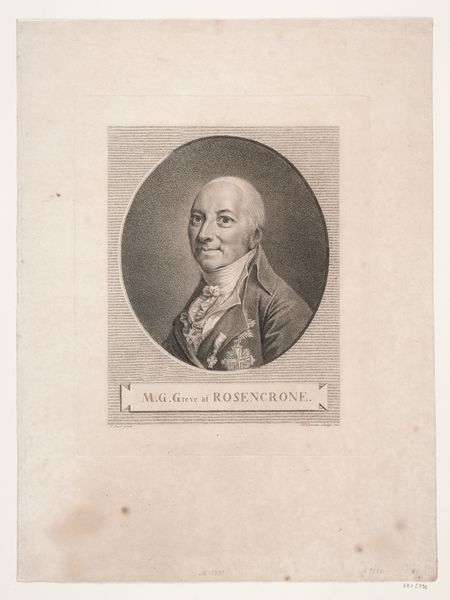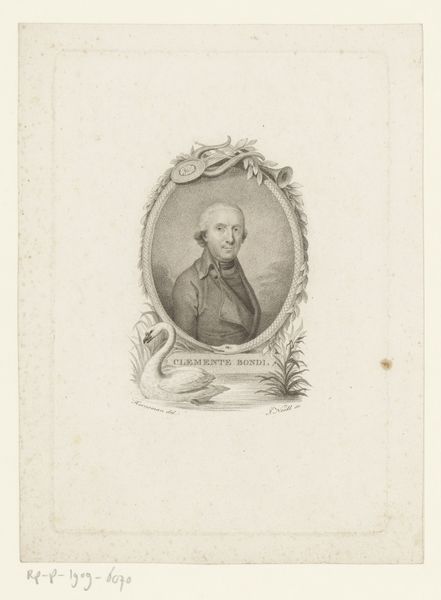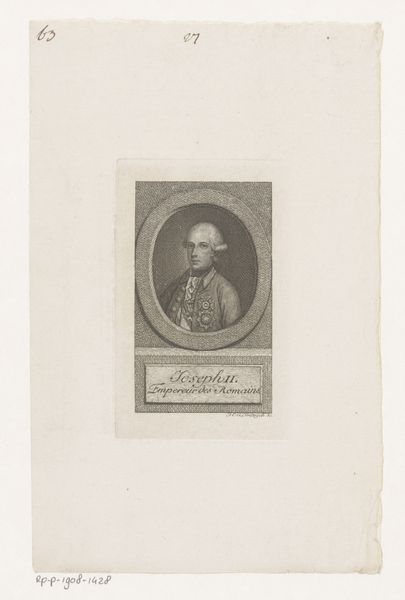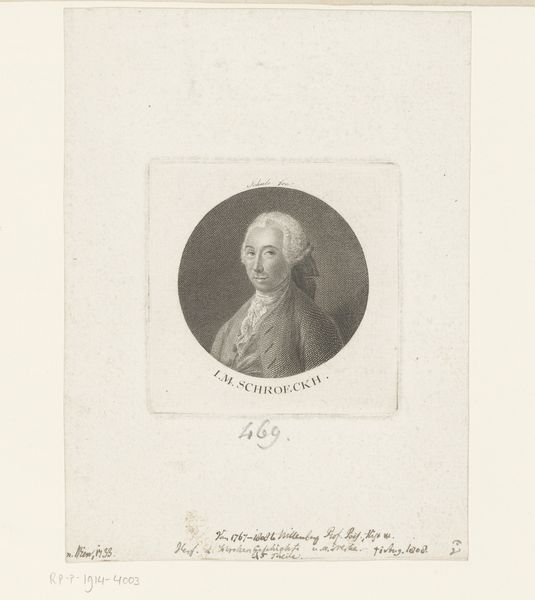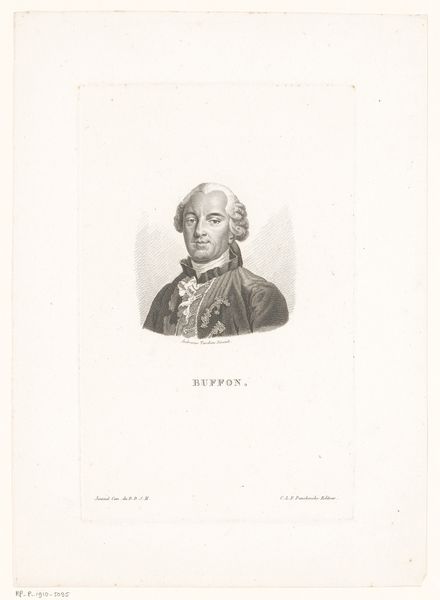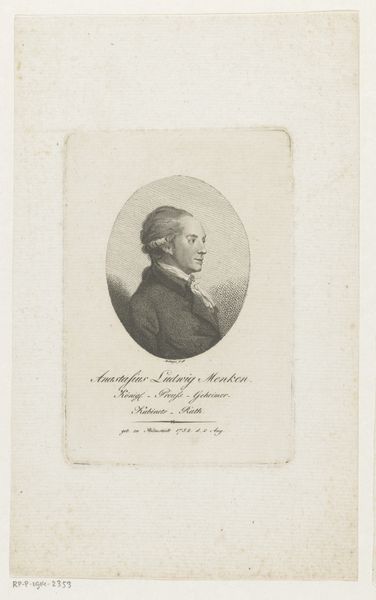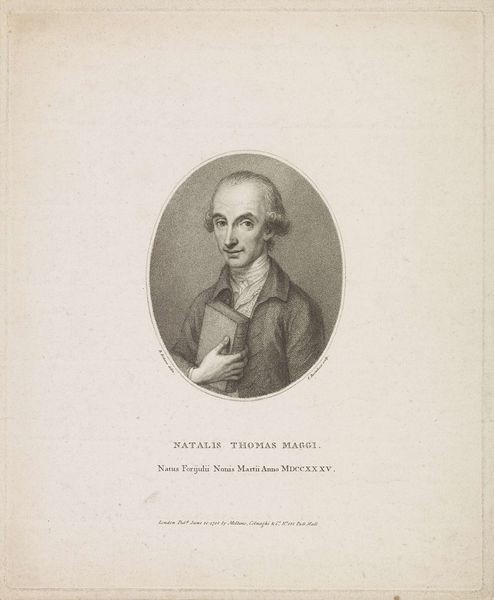
print, engraving
#
pencil drawn
#
neoclacissism
# print
#
pencil sketch
#
light coloured
#
old engraving style
#
pencil work
#
engraving
Dimensions: height 188 mm, width 119 mm
Copyright: Rijks Museum: Open Domain
Curator: Let's take a look at this engraving from around 1800, "Portret van Pierre Dezoteux de Cormatin," created by François Bonneville. The piece offers us a glimpse into a particular era of French society. Editor: It feels so… restrained. Very neoclassical in its reserve. There’s something unsettling in the sitter’s intense gaze, almost as if he's judging me through the centuries. The precision of the line work gives it a certain chill, don’t you think? Curator: That sense of restraint aligns with the historical moment. Neoclassicism often served to communicate ideas of order and stability, and of course the figure depicted played a role as Marechal de Camp within a very specific Royalist political struggle of the time. Considering that social unrest served as a major factor when the piece was created, there's that need to reaffirm power, privilege and legacy of royalist individuals such as Cormatin. Editor: I see that; there's definitely an effort to portray an air of command. How interesting that in an era of supposed revolution and social upheaval, art such as this attempts to conserve status quo, both on a personal and political level. How did the distribution of prints influence public perception in such politically volatile times? Curator: Engravings like these were a powerful form of propaganda, effectively disseminating images and thus carefully constructed ideologies to a wider audience. Bonneville, who would produce a lot of portraits, understood very well how those images would circulate within society. We could almost imagine this image being deployed against the Republican forces and values in newspapers or other popular media. Editor: Yes, it truly underscores the relationship between art and political agenda. Now that I look closer, there is an intensity behind those perfectly rendered features that conveys anything but "stability". Curator: Exactly! By examining those contexts and conditions surrounding both the sitter and artist, we can shed light on those layers of the past reflected within such artistic representations. Editor: It reminds me again just how images, even those rendered with seemingly simple techniques, can carry and communicate really powerful statements when considering the contexts they're borne from. Curator: Precisely. Thanks to these investigations, what initially might seem to some as a straightforward portrait opens up a gateway to understanding socio-political complexities of the historical landscape of revolutionary France.
Comments
No comments
Be the first to comment and join the conversation on the ultimate creative platform.
